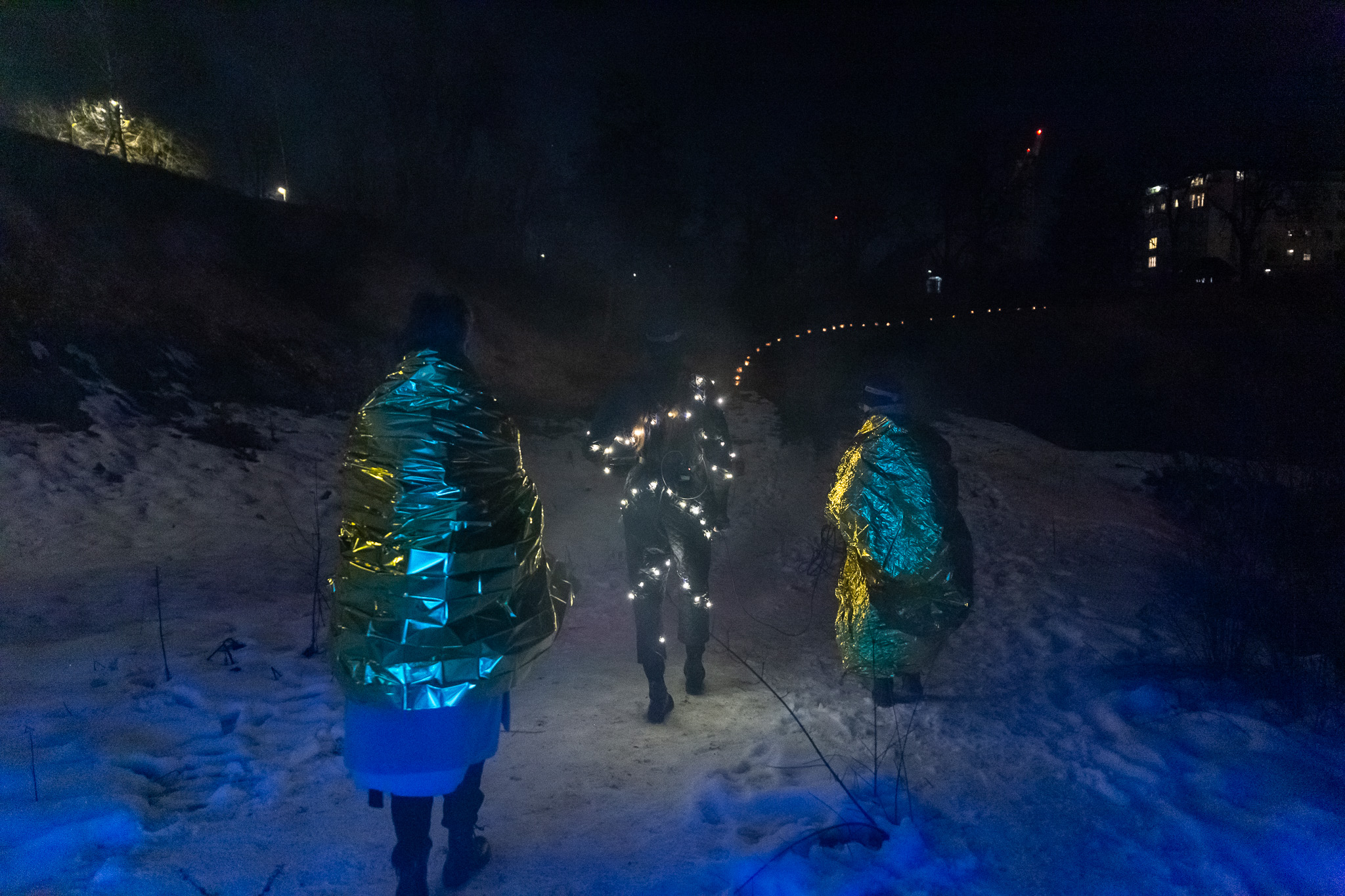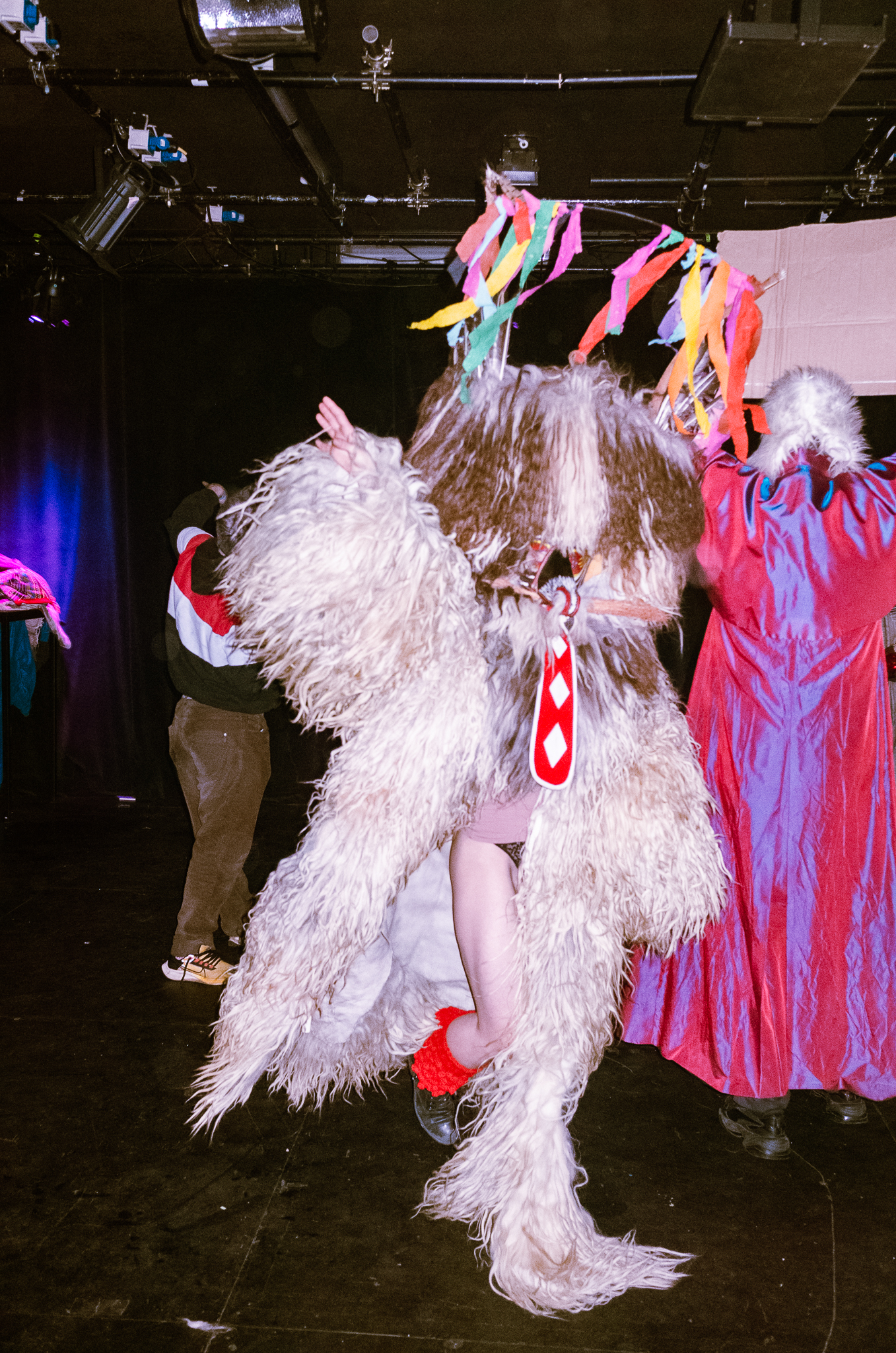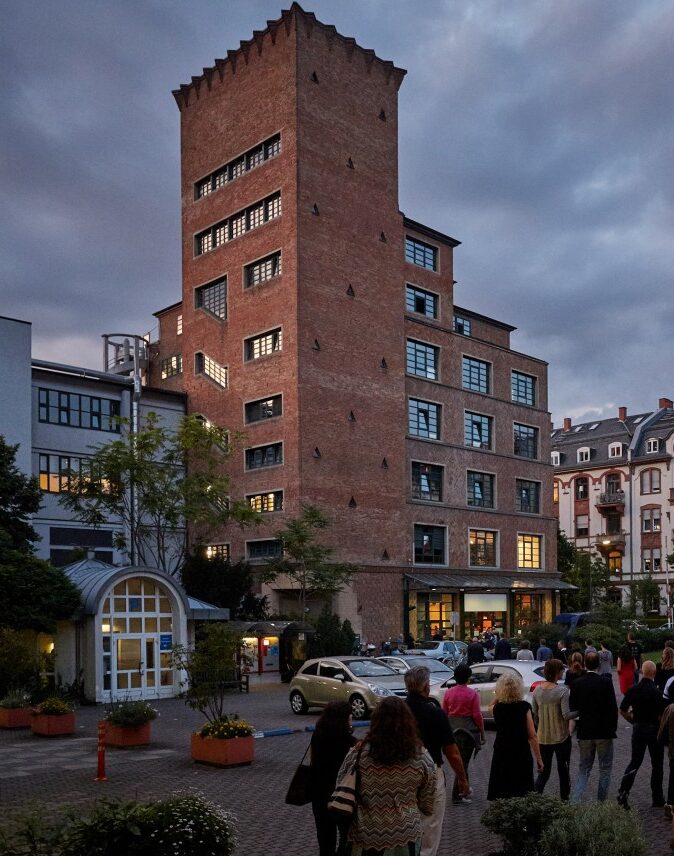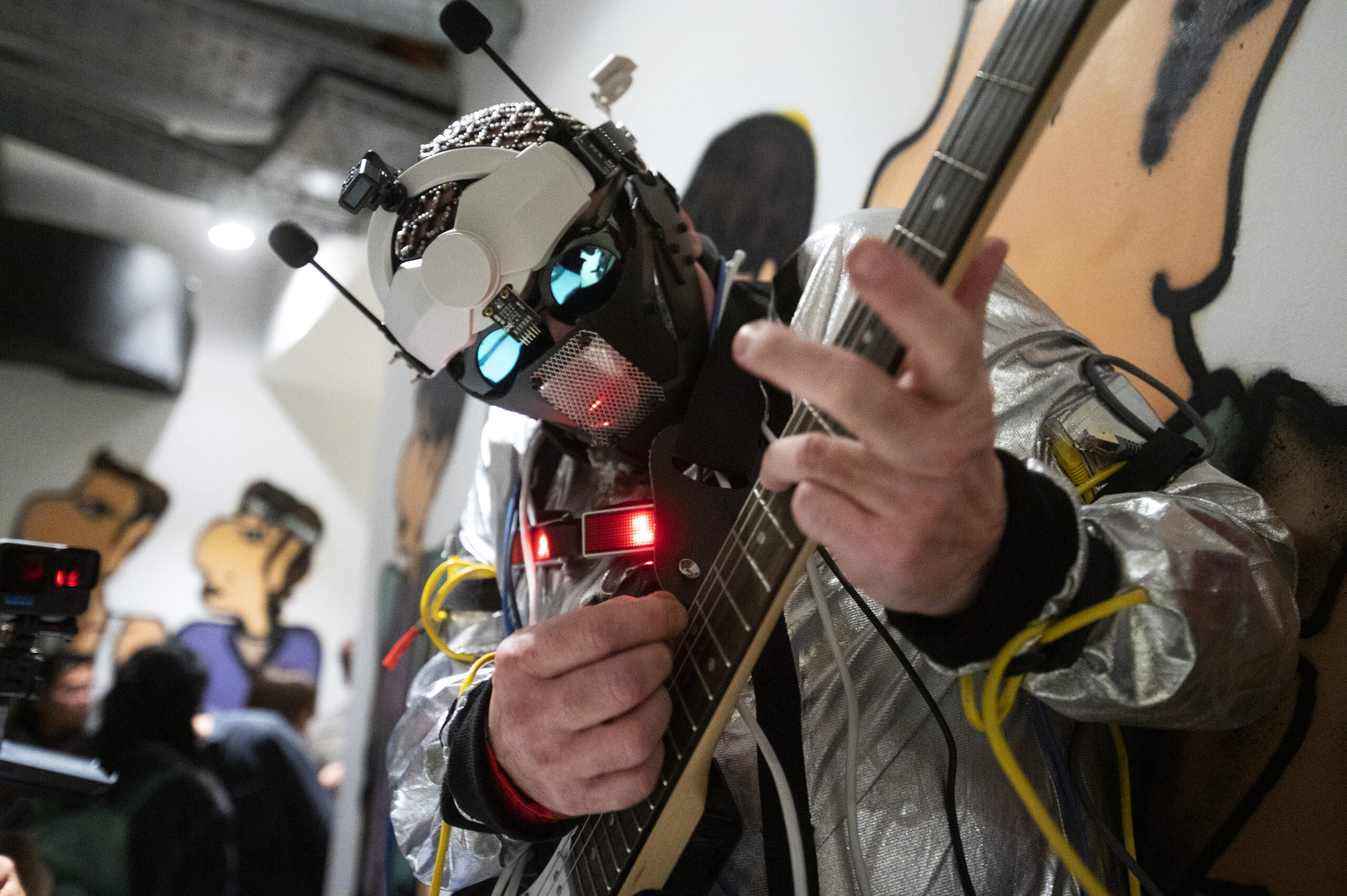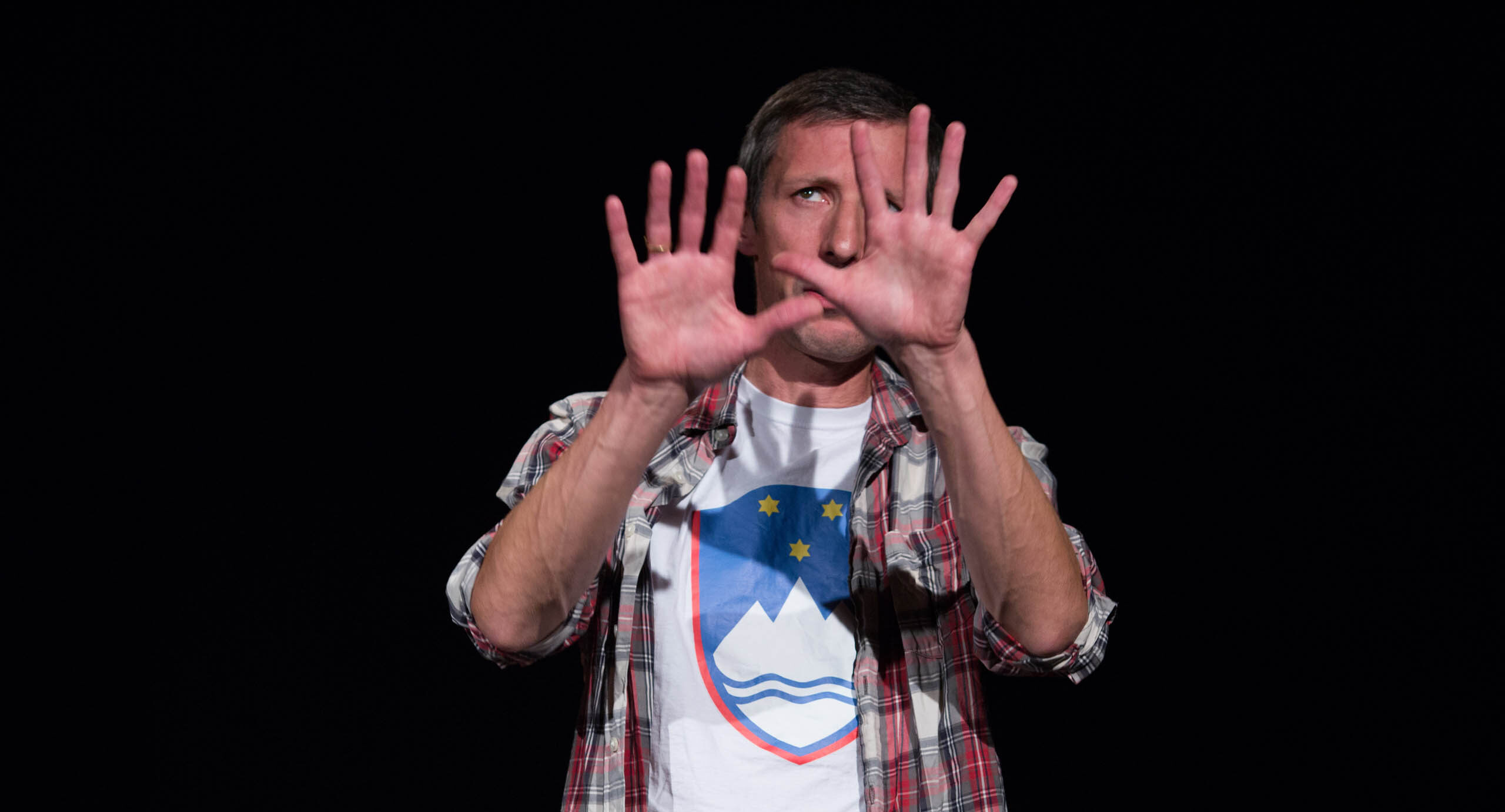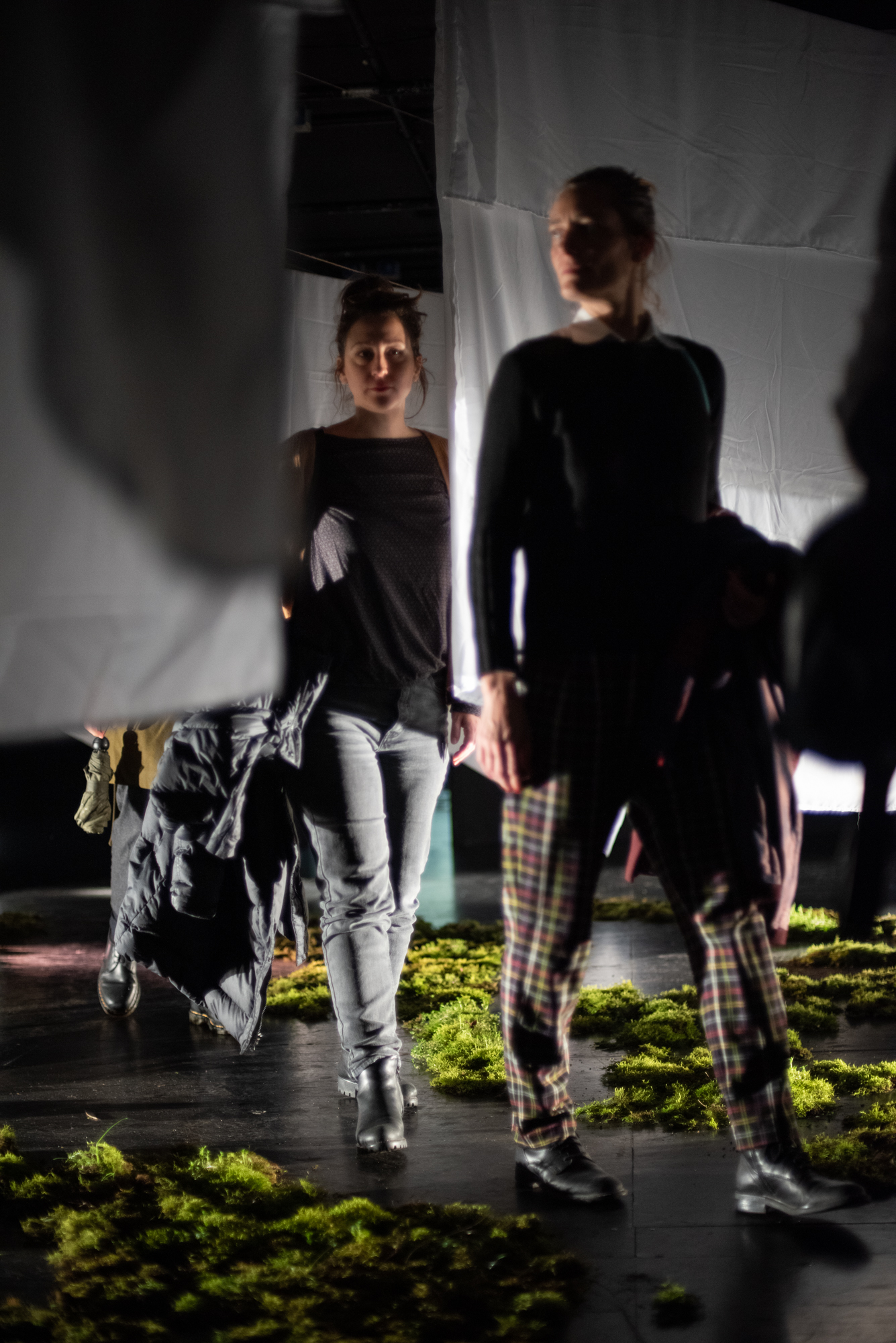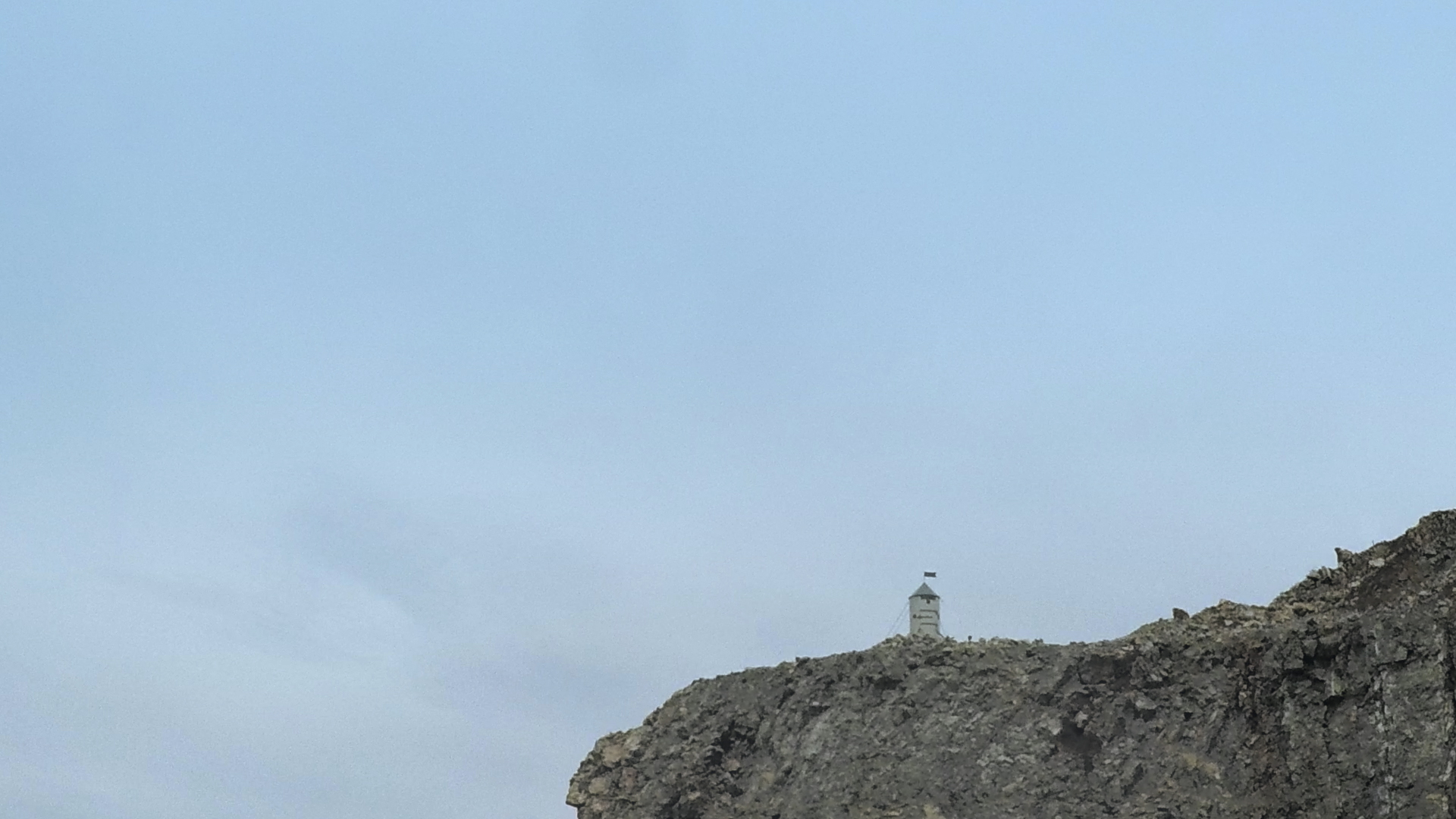Dunja Zupančič and Dragan Živadinov: Molekular/II

The conceptualisation of the 50-year performance NOORDUNG:: 1995–2045 is based on a reflection on abstract art. From the starting points dictated by the weightless environment (G-0), when left, right, above, below disappear in real space, when the figurative finally disappears from the theatre and is replaced by the techno-abstract! When antimimetic forms enter the stage.
The post-gravity artists Dragan Živadinov, Dunja Zupančič and Miha Turšič developed their conceptualisation from Kazimir Malevich’s Suprematist artwork “Supremus No. 56″ from 1916 and from the Trieste Constructivist Ambient from 1927, by the Constructivists Černigoj, Stepančič, Karmelič and Vlah. Both works represent the idea of the “optimal projection”, a point on the timeline located halfway to utopia. The conceptual vectorial of the 50-year performance was identified in the book The Philosophy of the Common Cause by the philosopher and cosmist Nikolai Fyodorovich Fyodorov. The 50-year performance NOORDUNG:: 1995–2045 is a common cause of the “post-gravitational artists”.
The first repeat performance of the NOORDUNG:: 1995–2045 took place on 20 April 2005 at the Hydrolab in Star City, just outside Moscow, on a model of the International Space Station.The second repeat performance was staged in 2015 at the newly built Cultural Centre of European Space Technologies (KSEVT) in Vitanje. During the second ten-year interval, the first actress, Milena Grm, passed away in 2011. Today, she is replaced by two techno-abstracts: the Umbot::MG art satellite and the Antena::MG art antenna.The next, third iteration of the 50-year performance will take place in two years, and the fourth in 2035.
The fifth and final performance will be staged on 20 April 2045, just before verticalisation, when Dragan Živadinov will transport fourteen art techno-abstract satellites Umbot to real near-space with the help of a spacecraft and install them at fourteen points around the planet Earth.
- TUESDAY, 26. 9. 2023, 20.00, Old Power Station – Elektro Ljubljana
Exhibition + Informance
Informers: Špela Mastnak, Lola Mlačnik, Marko Mlačnik, Aljoša Ž. Zupančič, Dragan Živadinov
Visual Structure: Dunja Zupančič
Video: Gregor Mesec
Music: Arseny Avramov / Simfonija industrijskih siren Symphony Of Factory Sirens / 1922, Baku
Re/interpretation: Lola Mlačnik
Thanks: Petra Bizilj, Blaž Rotar, Zoran Miloševič, GENERALI Zavarovalnica d. d.
Production: Maska Ljubljana in and Center za raziskave scenskih umetnosti DELAK DELAK – Centre for Performing Arts Research
Image: PROJECT NOORDUNG / 05:50, by Dunja Zupančič : : Dragan Živadinov, 2006, digital print
Zala Dobovšek
Launching their retro-garde vision of the theatre, combining three fundamental avant-garde principles – constructivism, futurism, and conceptualism – since the 1980s, Dragan Živadinov and Dunja Zupančič are two of the key constitutive pillars of the Slovenian performance scene. After studying theatre direction, Živadinov co-established the art movement Neue Slowenische Kunst at the Academy of Theatre, Radio, Film, and Television in 1984, but his strong commitment to the arts was already evident in the founding of the Scipion Nasice Sisters Theatre, which he conceived while still a student. A few years later (1987), he also established the Red Pilot cosmokinetic theatre, which transformed into Cosmokinetic Cabinet Noordung in the early 1990s. The year 1995 marked an important turn and upgrade of his artistic expression: together with Dunja Zupančič, Živadinov began connecting his art-theatre projects with science. As an ‘art cosmonaut’, he has consistently directed his focus to the field of ‘weightless space’ and began the 50-year tele-cosmic project Noordung, which is set to run until 2045.
The cult performance Baptism under Triglav (1986), which is firmly rooted among the central historical moments of Slovenian theatre history, was a landmark event in the context of its time and place, because it transformed previously established performance methods and critically questioned conventional perceptual impulses. It was a ‘representative cultural spectacle’, a visionary forecast of the performing principles of the future: the aestheticisation of everything. With the Scipion Nasice Sisters Theatre, Živadinov introduced new perspectives to the dramaturgic potentials of perception and understanding to the region: they were based on the idea of a ‘montage of attractions’, as the performers did not create ‘roles’ as such, but functioned as icons, images, and media. In the context of aesthetics, Zupančič and Živadinov as director and performer have radically changed the ‘value system’ of the relationship between the text and its (anti-)representation; by understanding human verbal communication as a game of sliding signifiers, they have always implemented extreme variations of post-modernism in their performances.
In the 1990s, Dragan Živadinov entered the third phase of his conceptualism, the first being the Scipion Nasice Sisters Theatre (1983–86), the second his work in the Red Pilot cosmokinetic theatre (1987–90): the Cosmokinetic Cabinet Noordung, with which he plans to ‘in 3 × 3 levels, from 1991 to 2045, eradicate art by traveling into weightlessness’. A specific performative element of Živadinov’s work since 2000 has been the ‘farewell rituals’, considered to be a unique example of an ‘ongoing performative project’, called Projectile Noordung (1995–2045). After 2010, Živadinov and Zupančič began reappearing in the institutional sphere – this time, not in an alternative experiment but in directing the 2011 play Love and Sovereignty (part of Vladimir Stojsavljević’s trilogy) on the Slovenian National Theatre Drama Ljubljana big stage, and also the plays Odilo. Obscuration. Oratorio. (Mladinsko Theatre, 2018) and Life is a Dream (Slovenian National Theatre Drama Maribor, 2022). In the last decade, they have also created a series of non-institutional projects under the guidance of the Delak Institute: Forbidden Theatre; Love and Sovereignty: Avatar; Projectator; Eccentric: Continuous Antigone; Biocosmism: Utterance, among others. By inventing new performance procedures together with new terms, such as projectator, syntapiens, informans, transformans, cosmokinetic machine, post-gravitational art, theatre projectile, and attractor, Živadinov also contributes to progress in terminology. He has always intervened in the neuralgic points of both history and art, emancipating the potential of social critique through diverse reflections, such as constructions of (sexual) identity, the politics of the body, the problematisation of representational mechanisms, and the performance–machine dialectic. It seems impossible to differentiate between the stage persona and the private Živadinov: on stage, he will, as a rule, play himself or just be himself, while in real life it seems that he constantly ‘performs’ – not to pretend but because he is a fanatic of his own vision; a vision that is, if real, not just declarative but inscribed in his body/essence. Živadinov is a constant recurring personification of himself. As a key parameter of the starting points of the practical gestures and theoretical thought of Živadinov and Zupančič, temporality is gaining new artistic dimensions and social contexts.
Temporality and persistence have acquired a new status of political charge. Today, in a time marked by fragmented focus, instant effects, a certain general impatience, and valuing time as a fundamental currency of being, their durational performances and cyclical repetitions can be understood as prominent and important art gestures that deal with their own autonomy and do not succumb to the dictatorship of capitalist productivity at any price.






